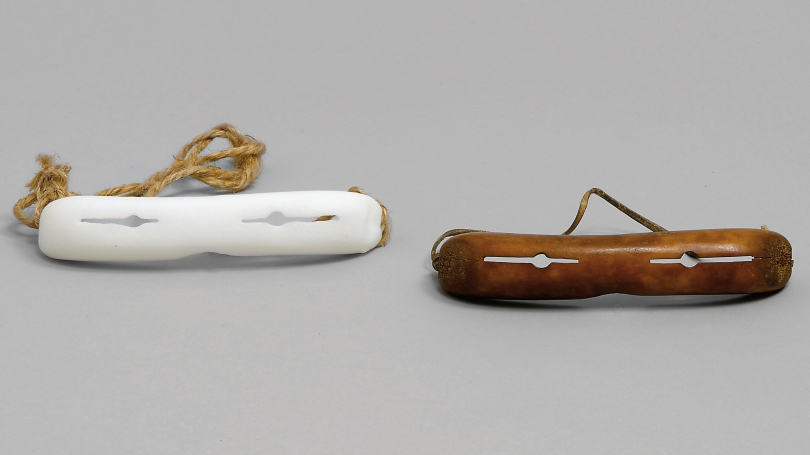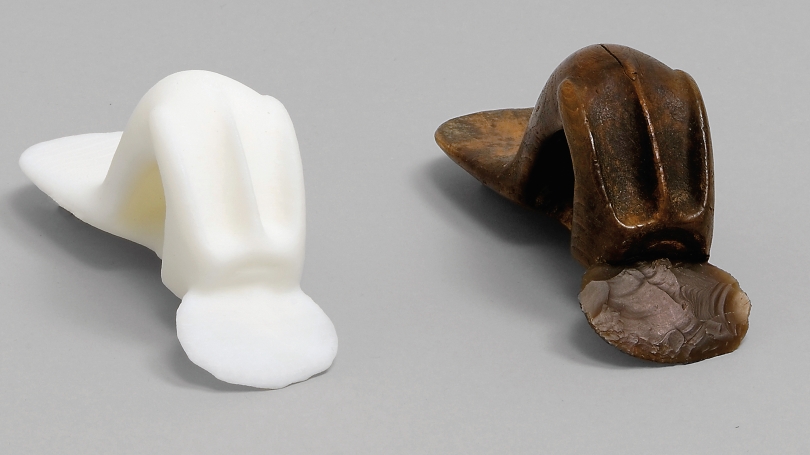Sometimes, a moment of experiential learning represents such a profound confluence of art, technology, and critical inquiry that it deserves a retelling outside of the classroom (or, in this case, the Hood’s Bernstein Study-Storage Center), and this was exactly what happened for a winter-term engineering class called “Integrated Design: Engineering, Architecture, and Building Technology” (ENGS 2), one of the sixty-two classes that studied at the museum between January and March. The class met multiple times at the Hood to engage in a “Learning to Look” exercise that related the museum’s collection to the academic engineering experience, under the auspices of Professors Vicki May and Jack Wilson, as well as Hood Foundation Curator of Education Lesley Wellman and Senior Curator of Collections and Barbara C. and Harvey P. Hood 1918 Curator of Academic Programming Kathy Hart.
Part of their museum exercise involved examining “mystery objects” from the Inuit collection, including snow goggles and a hide scraper, from the perspective of form and function, design and material. “I don’t like to listen to me talk for fifty minutes, so I’m sure they don’t like it either,” May said, in a 2013 story for the Thayer School of Engineering that announced her naming as New Hampshire Professor of the Year, about her approach to teaching and her practice of connecting students with real projects. “There’s lots of theory and that’s important, but being able to tie everything together by actually building something gets students excited and helps them learn, because they see a real context to all the math and science they’ve been doing.”
At the museum, students broke into small groups to answer a set of questions about these “mystery objects” in the museum’s study-storage center, including the following: What materials have been used to make them? Do the objects appear to be functional, ornamental, or both? How do these objects relate to the human body? What sorts of technology appear to have played a role in the design or construction of these objects? What do the objects tell you about the society in which they were made? The class then came together to report their findings, and left with an assignment to create their own utilitarian object based on those observed at the Hood.
Along the way, Professor Wilson noticed “that the students could not handle the objects”—this responsibility is reserved for the museum’s art handlers and curators—and “had the idea that we could use the portable 3-D scanner at the Thayer School of Engineering to scan some of the objects and make 3-D prints.” He successfully reproduced the two objects mentioned above as 3-D prints made of a white, composite material. He offered prints of the pair of goggles and the hide scraper to the museum to store and use in tandem with the actual objects whenever they are used for teaching.
The 3-D experiment was a great success for all involved—students, faculty members, and Hood staff. We thank Professors Vicki May and Jack Wilson and their students for helping us to discover a new way that engaging with technology can contribute to experiential learning with objects in the future—something that we hope to continue to put into practice!


